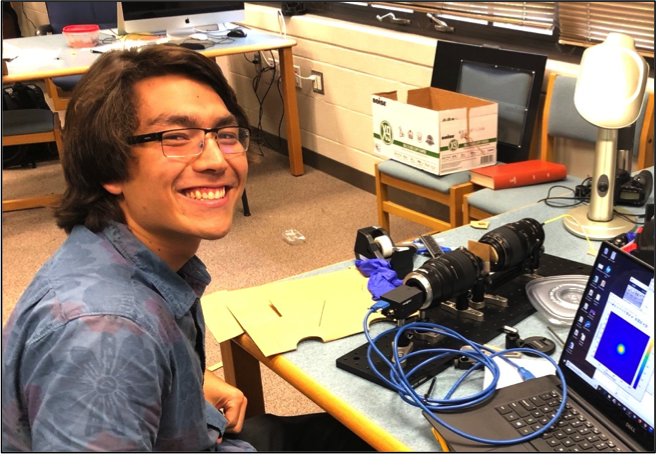
Jonathan Musgrave is currently a freshman in the Institute of Optics at the University of Rochester pursuing my degree in Optical Engineering. His goal is to use his degree to develop new and more efficient computational devices and to better understand the world around us. Jonathan was born and raised in Honolulu, HI and graduated from Punahou High School. He has always loved the sciences and especially physics and can’t wait to expand his knowledge in the field further.
Home Island: Oahu
Institution when accepted: University of Rochester
Akamai Project: `Imaka Atmosphere Telescope Simulator
Project Site: Institute for Astronomy Hilo
Mentor: Mark Chun
Project Abstract:
The ‘Imaka wide-field instrument has an areal field of view close to a magnitude larger than any other adaptive optics system currently in use for astronomy. The challenge for this ground layer adaptive optics (GLAO) system is to correct for the wavefront aberrations that arise from the atmosphere and from the instrument’s optical system. In order to characterize the performance of such a system we need to develop in the lab a way to replicate the aberrations and conditions the system will see “on-sky”. To do this we propose to use two commercial DSLR Canon lenses to generate on-axis and off-axis point sources (e.g. stars) for the system. The Challenge in doing this is that with `imaka’s wide field of view the optical design can become complex and expensive. Commercial lenses are a good choice due to the industry’s standard for high-quality imaging over wide fields of view. In this project such a system was prototyped on an optical breadboard with an aperture stop to simulate the correct telescope pupil. Data was collected to measure the image quality across the field to quantify the basic performance of the system. Later phase retardation screens will be placed into the system to simulate atmospheric conditions.The point spread function (PSF) across the field was measured and compared to a diffraction limited computer generated PSF to define image quality values such as Strehl ratio, full width half max (FWHM) and the modulus transfer function (MTF). The `imaka team will use this data to design a dedicated telescope and atmosphere simulator for the instrument.